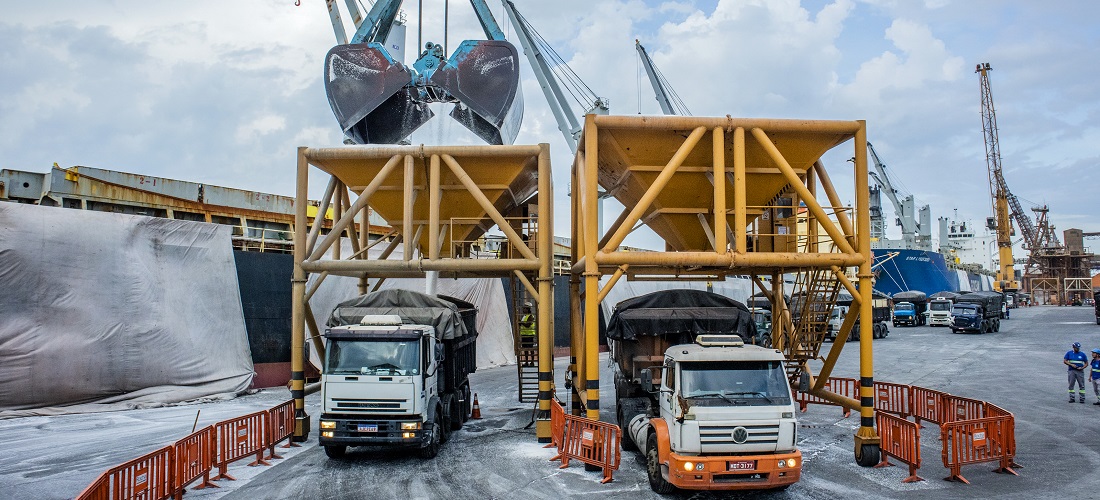
Brazilian fertilizer imports up 10% in 2020
Jan, 26, 2021 Posted by Ruth HollardWeek 202104
In 2020, Brazilian ports registered 34.25 million tons of fertilizer imports, almost 10% more than in 2019. The country is dependent on external purchases of fertilizers so it can provide the world with the result of three harvests per year.
Brazil spent US$ 8 billion in 2020 on fertilizer purchases. In dollars, the value was 11% below that registered a year earlier by SECEX, the foreign trade secretariat; in 2019, 31 million tons of fertilizers cost US$ 9 billion. The drop in the price of fertilizers in foreign currency explains the “discount”.
However, it is in the conversion of dollars to Brazilian reais that the increase in spending is most evident. In a scenario of the devaluation of the Brazilian currency in relation to the American currency, the weight is greater for products such as fruit and vegetables, which are not dollarized, such as soybeans and corn traded at international prices on the Chicago stock exchange.
Imports of mono ammonium phosphate (MAP), the main fertilizer used in soy, grew 22.2% last year, to 4.8 million tons. Urea, nitrogen demanded by corn, increased 27.6%, reaching 7.1 million tons. The inflow of potassium chloride (KCl) in the country, in turn, increased 7.4%, to 11 million tons.
According to Carlos Eduardo Florence, CEO of AMA (the Brazilian fertilizer-mixers association), imports were within expectations and Brazil needed to maintain the levels of transit stocks at around 5 to 6 million tons. This inventory volume is normal.
The supply of mineral fertilizers is restricted in Brazil for natural reasons, providing a minimum safeguard to offset the dependence on imports. The countries that account for most fertilizer shipments to Brazil are Russia, Canada, China, and Morocco. The 2020 internal distribution data, which also includes domestic production, are not yet available.
Florence recalls that last year’s purchases will fuel the planting of the second crop, especially corn, but also cotton in the midwest and Matopiba, sugar cane in São Paulo, and potato crops in the south and southeast during the first semester of 2021. With the imbroglio involving the increase of ICMS for agricultural inputs in the state of São Paulo, on which the government retreated, he believes that some more purchases may have been anticipated.
Source: Valor Econômico
-
Grains
Mar, 28, 2024
0
Argentina Set to Reclaim Top Spot in Soybean Meal Exports, Rosario Exchange Predicts
-
Shipping
Jul, 13, 2022
0
Cubo Itaú, Wilson Sons, Porto do Açu, Hidrovias do Brasil and Radix present maritime and port hubs
-
Other Cargo
Oct, 04, 2022
0
Apple iPhone exports from India top $1 billion in five months
-
Feb, 27, 2023
0
Brazilian gov’t grants terminal in the Port of Paranagua, secures BRL 338 mln investment

